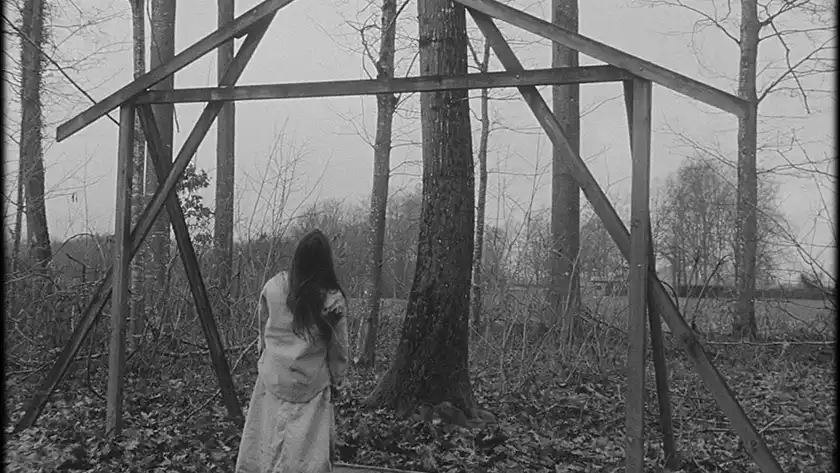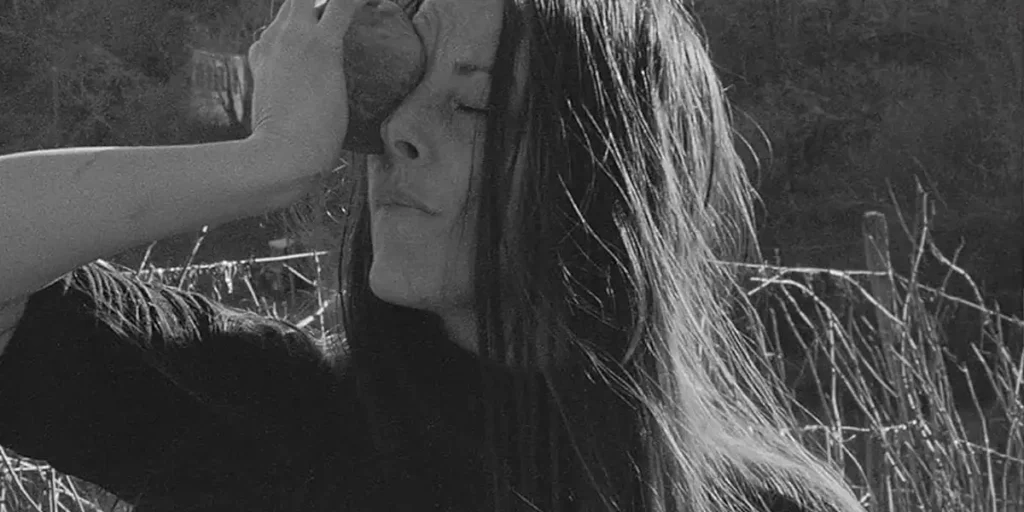The Diagonal Force is an ambitious and monumental documentary with its black-and-white aesthetic and philosophical scope.
Directors: Annik Leroy & Julie Morel
Genre: Documentary
Run Time: 145′
Screening Date: April 27, 2024
Where to watch: at the Open City Documentary Festival on April 27, 2024
Directed and written by Annik Leroy and Julie Morel, The Diagonal Force (La force diagonal) takes a look at the European history of the 20th century and the ghosts of its past that are still not entirely explored in mainstream media. The documentary takes on the ambitious attempt to combine stories of everyday people in traumatic historical events with famous and complex writings by the philosopher Hannah Arendt, but will it succeed in such a strenuous and complex task?
During its more than two-hour run time, The Diagonal Force attempts to combine philosophy and history. On one hand, the documentary is inspired by the writings of the German-American political philosopher Hannah Arendt. On the other, the film also follows the filmmakers, Annik Leroy and Julie Morel, as they travel across Europe to find accounts of the traumatic and life-changing experiences of everyday people: a woman recalls the 1990s in Sarajevo when the tram she was driving was hit by a shell, while we see her riding a tram in modern-day Sarajevo. In the second half, the dancer and choreographer Claire Vivianne Sobottke uses her dance performance to embody Arendt’s philosophical ideas.
The Diagonal Force is at its best in its first part. The focus on the personal stories is particularly interesting as it allows the audience an insider look at what certain key historical events looked like for the everyday people who lived through them. While the stories may feel somewhat unconnected from each other, they ultimately work together as the documentary brings the audience into the world of the documentary that alternates between various geographical places, like Sarajevo or a small town in Belgium, at different times in history with its use of diegetic sound and camera movements.
The second half of the film is a lot weaker and definitely less accessible for the general audience, who may not be interested in such a long segment on interpreted dance. This part, while a lot more artistic in its combination of dance, spoken word, and film, also seems a lot more constructed and artificial, which goes against the very principle of documentary filmmaking. It increasingly seemed like The Diagonal Force eventually overstayed its welcome, as this second part almost feels like an entirely different film. Thematically and visually, the two parts may be connected respectively by Arendt’s idea and the black-and-white aesthetics, but there was very little that made me find a connection between the different parts of the documentary.

There are some elements of the documentary that I really liked. The absence of the classic talking heads interviews is particularly interesting as they are instead replaced by mostly voiceover interviews as the camera shows us the places their stories and memories are set in and the people that inhabit them. But overall, there is little originality in the way The Diagonal Force tells this story. We have seen similar storytelling in recent documentaries too, most notably in Steve McQueen’s Occupied City last year, which also features a voice-over cut with modern-day footage of the city.
In all of this, I struggled to see how the movie connected its subject matter with Arendt’s philosophy. Theoretically, the film works, but when put into practice, the more philosophical sequences feel almost out of place. The Diagonal Force only features Arendt’s philosophy in an informational and self-righteous manner. Much of the film seems to want to include as much as possible of Arendt’s theories rather than wanting to explore the complexities behind Arendt’s writing, which is already complicated enough to understand when reading it from a book, let alone just by listening to it. The philosophical side is only spoken to the camera at various points during the documentary but does not feel tied in at all with the rest of the narrative.
As I watched the film, I could not help but feel that The Diagonal Force wanted to do too much with all its different but disconnected ideas. This ultimately undermines the various narratives of the documentary as they all get lost in the intricate final product. The idea of combining some relevant and timely philosophical ideas to accompany real-life stories is a fascinating one. Still, it is also particularly complicated to portray through the film medium. Is anyone truly going to remember any of the highly complex and theoretical ideals that the movie is trying to convey? I doubt so.
The Diagonal Force was screened at the Open City Documentary Festival on April 27, 2024, followed by a Q&A with Annik Leroy and Julie Morel.

